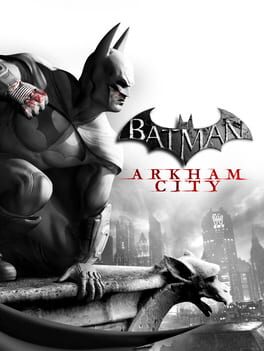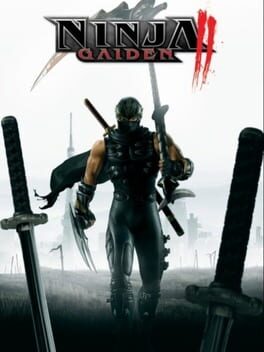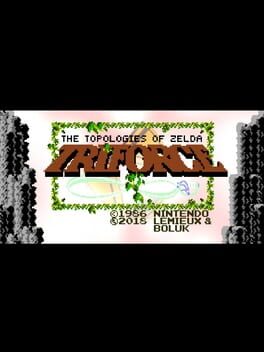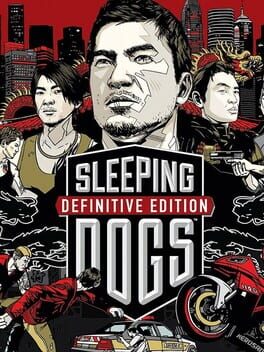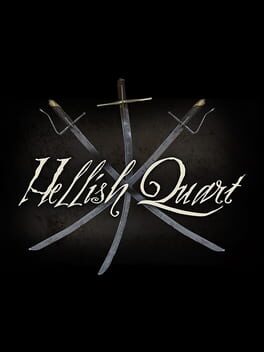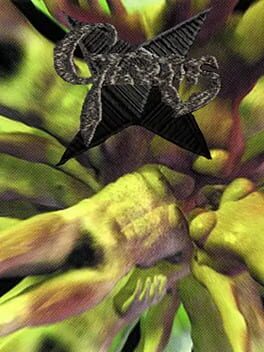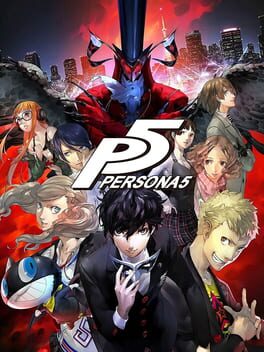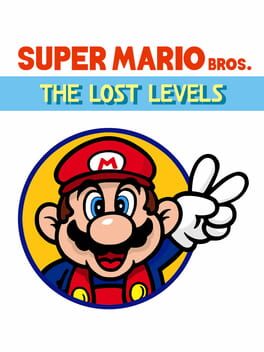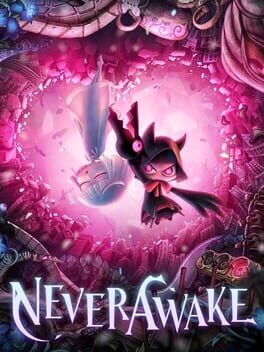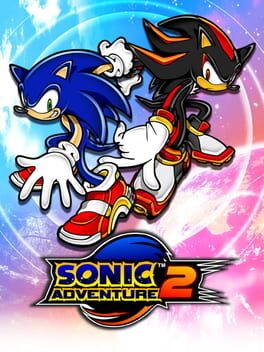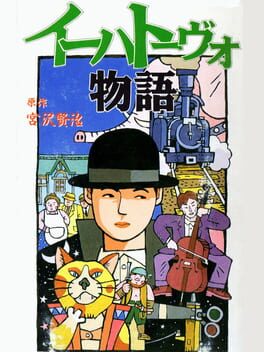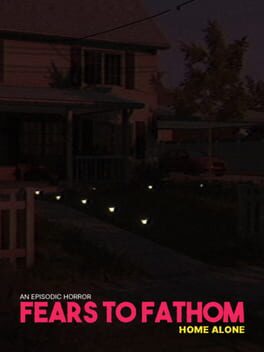2011
80% of action video games make you feel like a superhero, from stunt plumbers to teenage girls with boomerangs (Kya) or robber raccoons who operate M: I style, so the "feel like superhero" thing is
somewhat innocuous words for me.
We all know that the poor sociocultural conception of video games relegates superhero licenses to being embedded in the most obvious ways, such as platforms or beat em ups, always losing an important part along the way of what makes them special , superpowers or politics, and fact is that arkham city is not that different in substance. Asylum was a hybrid of melee combat, stealth and puzzles, in a relatively controlled environment that was explored in a monitored way through multifunctional gadgets that served as a key, not unlike a contemporary production of Nintendo or Ubisoft.
With a setting on the way between the comic of the long halloween and John Carpenter's escape from new york, rocksteady packages the most recognizable aesthetic of batman in the pop scene and, as did the animated series, it translates it into modern pop video game language. but although the result has charm, and doesn't seem to want to bloat with hours of content, does not evade some bad avenues of the AAA scene
This is the batman for a new generation, adapts the character without complexities or obstacles to a language that until 2011, never found a way to do it properly. at the same time, it is an x-ray of modern video games
_________________________________________________________
what’s missing from contemporary video Games culture? I would say it is integrity, a lot if we talk about pop video games of the 2010s. Maybe it was the fault of the Great Recession or maybe it was the increase in costs in the productions of the HD era? The thing is that little by little we begin to demand content for content, if bigger, prettier, for more hours, the better. The next we already know
somewhat innocuous words for me.
We all know that the poor sociocultural conception of video games relegates superhero licenses to being embedded in the most obvious ways, such as platforms or beat em ups, always losing an important part along the way of what makes them special , superpowers or politics, and fact is that arkham city is not that different in substance. Asylum was a hybrid of melee combat, stealth and puzzles, in a relatively controlled environment that was explored in a monitored way through multifunctional gadgets that served as a key, not unlike a contemporary production of Nintendo or Ubisoft.
With a setting on the way between the comic of the long halloween and John Carpenter's escape from new york, rocksteady packages the most recognizable aesthetic of batman in the pop scene and, as did the animated series, it translates it into modern pop video game language. but although the result has charm, and doesn't seem to want to bloat with hours of content, does not evade some bad avenues of the AAA scene
This is the batman for a new generation, adapts the character without complexities or obstacles to a language that until 2011, never found a way to do it properly. at the same time, it is an x-ray of modern video games
_________________________________________________________
what’s missing from contemporary video Games culture? I would say it is integrity, a lot if we talk about pop video games of the 2010s. Maybe it was the fault of the Great Recession or maybe it was the increase in costs in the productions of the HD era? The thing is that little by little we begin to demand content for content, if bigger, prettier, for more hours, the better. The next we already know
2023
-With the nerves to the limit, but with a smooth movement, justified by the style of animation. I don't know, I see it as a bit contradictory to the crazy and animated world that the game poses
-I haven't played any Wario Land, but here the approach of the double level design (hit and run) in communion with the two possible forms of mobility, until the two collide with each other, is super interesting.
but, there is the problem, that they collide in what I intuit is an impossibility to get rid of their formative references in terms of a "genre", called "the platformers".
The idea of scoring through collecting and other chores at levels that force you to fluctuate between jumping, speed and momentum does not seem very appropriate to me if at the least I fail I have to repeat a sequence of three heights and four platforms, for very funny and schizophrenic that are the crash and fall animations.
Between the seams of the game, a speerun logic almost appears?
I don't see the great Peppino spaghetti being an avatar of total control in chaos, rather I see him suffering from chaos, heck, that's how the protagonist seems to be presented, as someone on the verge of sanity, breaking with everything he knows. crosses.
-So vacuously it has been possible to attribute to Signalis that its structure is a mixture without substance (partially correct, but I don't see it badly for a game whose one of its main reasons is "memory" as a concept) beyond the visual, I think this could perfectly apply to Pizza Tower: the weight, the speed and the alleys and unthinkable traps of Sonic with the framework of Wario Land? (I intuit, I reiterate that I have not played)
But I find another similarity with Sonic: the divergence between character concept and game concept.
you already know
Speed vs Caution in Sonic
Chaos and humor vs Control and some precision in Pizza Tower
Am I the only one who feels this?
-The mixture is quite satisfactory, but why would that be enough?
-usually the internal coherences matter very little to me, and I hate applying the operational sense of the real world, I prefer the expression and the personality, at any cost. but here I find the expression in the same way as some contemporary games that rely entirely on the animations of their characters. And that's not bad at all, it's completely fine but I didn't find a situation where the comedy came from the game design instead of the characters and their animations. It's a bit picky, but I feel the same way I do when I watch one of the new Pixar-like CGI animated movies, with little interest in cinematography and space-time relationships.
I love the energy of this game, but at the same time it leaves me super cold
-I haven't played any Wario Land, but here the approach of the double level design (hit and run) in communion with the two possible forms of mobility, until the two collide with each other, is super interesting.
but, there is the problem, that they collide in what I intuit is an impossibility to get rid of their formative references in terms of a "genre", called "the platformers".
The idea of scoring through collecting and other chores at levels that force you to fluctuate between jumping, speed and momentum does not seem very appropriate to me if at the least I fail I have to repeat a sequence of three heights and four platforms, for very funny and schizophrenic that are the crash and fall animations.
Between the seams of the game, a speerun logic almost appears?
I don't see the great Peppino spaghetti being an avatar of total control in chaos, rather I see him suffering from chaos, heck, that's how the protagonist seems to be presented, as someone on the verge of sanity, breaking with everything he knows. crosses.
-So vacuously it has been possible to attribute to Signalis that its structure is a mixture without substance (partially correct, but I don't see it badly for a game whose one of its main reasons is "memory" as a concept) beyond the visual, I think this could perfectly apply to Pizza Tower: the weight, the speed and the alleys and unthinkable traps of Sonic with the framework of Wario Land? (I intuit, I reiterate that I have not played)
But I find another similarity with Sonic: the divergence between character concept and game concept.
you already know
Speed vs Caution in Sonic
Chaos and humor vs Control and some precision in Pizza Tower
Am I the only one who feels this?
-The mixture is quite satisfactory, but why would that be enough?
-usually the internal coherences matter very little to me, and I hate applying the operational sense of the real world, I prefer the expression and the personality, at any cost. but here I find the expression in the same way as some contemporary games that rely entirely on the animations of their characters. And that's not bad at all, it's completely fine but I didn't find a situation where the comedy came from the game design instead of the characters and their animations. It's a bit picky, but I feel the same way I do when I watch one of the new Pixar-like CGI animated movies, with little interest in cinematography and space-time relationships.
I love the energy of this game, but at the same time it leaves me super cold
2008
Leaving aside the fact that my previous reviews Itagaki's Ninja Gaiden 2 and WET were the result of drunken nights and carousing, I still have a genuine interest in how some video games confidently carry a "Vulgar" aesthetic in times where the masses concentrate on photorealism, pixel art or cutewholesomethang (maybe?)
Let's also leave aside the fact that for video games, exploitation, in every sense of the word, is like a lung.
________-_
Both Itagaki's ninja gaiden and WET have the will to inherit the most vulgar and savage aesthetics of Asian exploitation cinema, and its derivatives, only one does it passively and the other seems to be desperately looking for it, like comparing Chang Cheh vs Tarantino.
God forgive me.
Itagaki's ninja gaiden is at its core, in spirit more like the films it wants to be a playable response to -let's say Chang Cheh's cinema-, Ninja Gaiden is a wild, aggressive product for the player, who doesn't really care in excess for pleasing everyone and that guards its greatness in deep places that not everyone is willing to reach, although visually it is everything that at the beginning of the HD era and the great recession was asked of an AAA; it relies on clean, powerful imagery, a hyper-stylized plastic sense with attention to toned bodies, fluids, fabrics and movement, and had a strong cinematic component.
instead, WET is more like a Tarantino movie. Not like it stays in an egofalocentric pastiche that depends on the ignorance or incuriosity of people like Kill Bill was, but although it hurts me the reality is that WET has a -great- very interesting action premise that is tamed by a worthy planning of an AAA or study budget-at best-where the epidermal is the substance. Littering the already-suffering 30-frame image full of jagged edges and blurriness with burnt filters, stock sounds, and transitions that attempt to emulate a Grindhouse experience is certainly daring for a game whose playable core is efficiency and reflexes. the result pushes the game to exist as a short, cheap and unhygienic party, but very enjoyable, which unlike Tarantino does have a somewhat vulgar rebellious spirit.
Not that good as NGII, but hey.
Let's also leave aside the fact that for video games, exploitation, in every sense of the word, is like a lung.
________-_
Both Itagaki's ninja gaiden and WET have the will to inherit the most vulgar and savage aesthetics of Asian exploitation cinema, and its derivatives, only one does it passively and the other seems to be desperately looking for it, like comparing Chang Cheh vs Tarantino.
God forgive me.
Itagaki's ninja gaiden is at its core, in spirit more like the films it wants to be a playable response to -let's say Chang Cheh's cinema-, Ninja Gaiden is a wild, aggressive product for the player, who doesn't really care in excess for pleasing everyone and that guards its greatness in deep places that not everyone is willing to reach, although visually it is everything that at the beginning of the HD era and the great recession was asked of an AAA; it relies on clean, powerful imagery, a hyper-stylized plastic sense with attention to toned bodies, fluids, fabrics and movement, and had a strong cinematic component.
instead, WET is more like a Tarantino movie. Not like it stays in an egofalocentric pastiche that depends on the ignorance or incuriosity of people like Kill Bill was, but although it hurts me the reality is that WET has a -great- very interesting action premise that is tamed by a worthy planning of an AAA or study budget-at best-where the epidermal is the substance. Littering the already-suffering 30-frame image full of jagged edges and blurriness with burnt filters, stock sounds, and transitions that attempt to emulate a Grindhouse experience is certainly daring for a game whose playable core is efficiency and reflexes. the result pushes the game to exist as a short, cheap and unhygienic party, but very enjoyable, which unlike Tarantino does have a somewhat vulgar rebellious spirit.
Not that good as NGII, but hey.
2023
This game mixes the textual and metatextual sense of spectacle in an admirable way.
Combat aside, it is very little spontaneous, despite being an action game. Everything has its tempo, and that leads to a routine.
Jump here when the obstacle allows it, shoot at this grid target, destroy the wall when the circles say so. Not my ideal adventure.
But
Overthrowing a megacorp requires a plan, and in the capitalist world there is very little room for freedom, for expression, to explode with music and colors... Does it have any aesthetic sense?
Poetry is made through its structure: the idea of visuals that seem to be ripped from a Jetix mid 2000 show in an explosive and colorful action game, driving a happy and carefree protagonist who literally has music in his heart and perceives The world through it, fight against machines and managers through offices and automated production floors brandishing a guitar made of scrap, which, strangely enough, takes on a pristine and ideal appearance the more we fight.
Although of course, it is better if we stick to the tempo that the world marks us (literally).
wow.
A very current dichotomy for those of us who grew up in the 2000s with the new wave of 3d action games -the misnamed """"hack n slash character action game stylisssh""" - with the new music distribution formats through Internet, the anime fansub booms and, above all, with the promises of a better future, social, labor and technological.
It doesn't matter if we look back in the days or to the future, now it sounds like utopia.
-----------------------
- Remake in the form of a mashup is something that attracts me. I see it as more honest reinterpretation than trying to be "the new standard" by holding on to past ideas.
It allows authors/programmers to be recognized as people and establishes links of understanding with them and with a medium without a real canon.
For me, Hi fi Rush is closer to Bravely Default, Tunic, Assault Spy or Spark The Electric Jester 3 than Hollow Knight, Drainus or anything from Team Ladybug because it rips off a piece of time and to articulate a fantasy that goes back to a happy and fleeting time (the truth is that at the governmental and economic level the 2000s were pretty fucked up in their last stretch) not to entrench themselves in them, but to introspect how memory is intermingled with the present. and it only takes a couple of hours of gameplay to understand this.
I guess I see it similar to all those people who say "wow its like ps2 game!"
maybe.
I haven't had a chance to play Astral Chain but I think it's beautiful that Taura ripped a piece of Japanese pop culture from Tokusatsu and Sci-fi anime (misunderstood as "cyberpunk") and made a game where the simple activity of watching and walking the streets is on the same level as the action.
Build their universes based on formative references or young fetishes. Because nowadays, how many adults have time to discover and be as passionate as when they were children? It's not vulgar nostalgia, it's the sad life cycle that some people find themselves in.
-Although I think that the planning of the game and its fiction point to the precarious and inhuman reality in which we live, articulated as a capitalist critique for children (this is good), everything is too scripted. Not condescending, patterned.
Navigating the stages is a tedious low-key and unsophisticated score, while the combat is a good jam session where finding your own rhythm and fitting it in with the world becomes a wonderful thing.
Although to be honest, this part of combat is not something new
At least if, like me, you grew up with Bloody Palace and God Hand while your mother listened to bootleg CDs of Sleater Kinney and Linkin Park at high volume?
I don't know, I don't see this being the game I return to repeatedly with my mixtapes... in a few years maybe
But I like this game, it's not the passion project they're trying to sell us, but it certainly has passion on it.
and bonus points for using Whirring as a killer track.
lovely
https://www.youtube.com/watch?v=a2BUEzdjfpY
Combat aside, it is very little spontaneous, despite being an action game. Everything has its tempo, and that leads to a routine.
Jump here when the obstacle allows it, shoot at this grid target, destroy the wall when the circles say so. Not my ideal adventure.
But
Overthrowing a megacorp requires a plan, and in the capitalist world there is very little room for freedom, for expression, to explode with music and colors... Does it have any aesthetic sense?
Poetry is made through its structure: the idea of visuals that seem to be ripped from a Jetix mid 2000 show in an explosive and colorful action game, driving a happy and carefree protagonist who literally has music in his heart and perceives The world through it, fight against machines and managers through offices and automated production floors brandishing a guitar made of scrap, which, strangely enough, takes on a pristine and ideal appearance the more we fight.
Although of course, it is better if we stick to the tempo that the world marks us (literally).
wow.
A very current dichotomy for those of us who grew up in the 2000s with the new wave of 3d action games -the misnamed """"hack n slash character action game stylisssh""" - with the new music distribution formats through Internet, the anime fansub booms and, above all, with the promises of a better future, social, labor and technological.
It doesn't matter if we look back in the days or to the future, now it sounds like utopia.
-----------------------
- Remake in the form of a mashup is something that attracts me. I see it as more honest reinterpretation than trying to be "the new standard" by holding on to past ideas.
It allows authors/programmers to be recognized as people and establishes links of understanding with them and with a medium without a real canon.
For me, Hi fi Rush is closer to Bravely Default, Tunic, Assault Spy or Spark The Electric Jester 3 than Hollow Knight, Drainus or anything from Team Ladybug because it rips off a piece of time and to articulate a fantasy that goes back to a happy and fleeting time (the truth is that at the governmental and economic level the 2000s were pretty fucked up in their last stretch) not to entrench themselves in them, but to introspect how memory is intermingled with the present. and it only takes a couple of hours of gameplay to understand this.
I guess I see it similar to all those people who say "wow its like ps2 game!"
maybe.
I haven't had a chance to play Astral Chain but I think it's beautiful that Taura ripped a piece of Japanese pop culture from Tokusatsu and Sci-fi anime (misunderstood as "cyberpunk") and made a game where the simple activity of watching and walking the streets is on the same level as the action.
Build their universes based on formative references or young fetishes. Because nowadays, how many adults have time to discover and be as passionate as when they were children? It's not vulgar nostalgia, it's the sad life cycle that some people find themselves in.
-Although I think that the planning of the game and its fiction point to the precarious and inhuman reality in which we live, articulated as a capitalist critique for children (this is good), everything is too scripted. Not condescending, patterned.
Navigating the stages is a tedious low-key and unsophisticated score, while the combat is a good jam session where finding your own rhythm and fitting it in with the world becomes a wonderful thing.
Although to be honest, this part of combat is not something new
At least if, like me, you grew up with Bloody Palace and God Hand while your mother listened to bootleg CDs of Sleater Kinney and Linkin Park at high volume?
I don't know, I don't see this being the game I return to repeatedly with my mixtapes... in a few years maybe
But I like this game, it's not the passion project they're trying to sell us, but it certainly has passion on it.
and bonus points for using Whirring as a killer track.
lovely
https://www.youtube.com/watch?v=a2BUEzdjfpY
Because in the end the world is a space to solve.
Sometimes with logic, sometimes with perspective, sometimes with force, sometimes by listening.
there is nature, but naturalistic logic is a lie. at least in modern life.
Curiously, puzzling the orientation and twisting the land we walk on -in the shape of a Donut, the industrial shape- the perspective reveals that there were no forests on earth, we made the forests, we imagined the height of that mountain. They suggested us, we accepted.
There are shades between "natural" progression and satisfying progression. we often confuse them.
This is very pessimistic, but I think that what defines us as people is usually the lies and truths that we accept.
Sometimes with logic, sometimes with perspective, sometimes with force, sometimes by listening.
there is nature, but naturalistic logic is a lie. at least in modern life.
Curiously, puzzling the orientation and twisting the land we walk on -in the shape of a Donut, the industrial shape- the perspective reveals that there were no forests on earth, we made the forests, we imagined the height of that mountain. They suggested us, we accepted.
There are shades between "natural" progression and satisfying progression. we often confuse them.
This is very pessimistic, but I think that what defines us as people is usually the lies and truths that we accept.
drunk thoughts:
- our spectacle is entirely metatextual
-The game is a fail at the beginning. the drama adopts the triads as an aesthetic element rather than as a real device for conflict. Any protocol or issue related to the triads is taken more from the collective imagination, more from and closer to the mafias of Europe than to those of Asia.
Of course, in the end, the bad guy was the Occidental.
-Less vulgar (vulgar images and spaces are good) than it appears and more organized (poorly) than it should. Any moment is approached from the same common ground as all modern action games with open-world structures: (efficient) fights and (horrible) shootouts here, chases there, on foot or in vehicles. Follow the line on the minimap, don't get lost.
and bro, nothing really matters when no set-piece takes advantage of the architecture. Why Hong Kong? I play because I'm supposed to be Hong Kong, but until I raise the camera slightly I can't tell these digital streets apart from others I've already seen. The camera does not emphasize anything or let me take a look on my own, it is hermetic and protocol business.
And how can it be? There is pampering here. Yes there is architectural mime (I guess)
-the True -True Crime Hong Kong: the city is a zombie set where the little life of space begins and ends with its references to the cinema. God, what a pain to see PTU reduced to a couple of fights and encryption minigames
Anyone who has seen Johnnie To knows that the monster, the titan and the biggest character in HK cinema is the city itself.
but here is just a wallpaper.
- our spectacle is entirely metatextual
-The game is a fail at the beginning. the drama adopts the triads as an aesthetic element rather than as a real device for conflict. Any protocol or issue related to the triads is taken more from the collective imagination, more from and closer to the mafias of Europe than to those of Asia.
Of course, in the end, the bad guy was the Occidental.
-Less vulgar (vulgar images and spaces are good) than it appears and more organized (poorly) than it should. Any moment is approached from the same common ground as all modern action games with open-world structures: (efficient) fights and (horrible) shootouts here, chases there, on foot or in vehicles. Follow the line on the minimap, don't get lost.
and bro, nothing really matters when no set-piece takes advantage of the architecture. Why Hong Kong? I play because I'm supposed to be Hong Kong, but until I raise the camera slightly I can't tell these digital streets apart from others I've already seen. The camera does not emphasize anything or let me take a look on my own, it is hermetic and protocol business.
And how can it be? There is pampering here. Yes there is architectural mime (I guess)
-the True -True Crime Hong Kong: the city is a zombie set where the little life of space begins and ends with its references to the cinema. God, what a pain to see PTU reduced to a couple of fights and encryption minigames
Anyone who has seen Johnnie To knows that the monster, the titan and the biggest character in HK cinema is the city itself.
but here is just a wallpaper.
2021
Thoughts have arisen playing this, more aesthetic than the game itself
A couple of notes:
-The vast majority of confrontations in fighting games are raised under an ultrafictitious logic that the aesthetics of combat is something similar to "a dance", perhaps that is why tremendous animations are designed with an almost liquid fluidity of movement, that's great, the body, as a flexible element disconnected from logic, should always be explored, but it is very far from the truth; Martial arts training, adapted for sport or not, is remotely similar to dance in that both are rehearsal and rehearsal, to feel and perfect a physical technique, but not much more. And the direct and real metrics of a fight are opposite to those of a couple dance. The aesthetic satisfaction that comes from seeing performers at their peak of skill is the only link between the two arts, and that too is probably inaccurate, because fighters must fail and dancers cannot afford it.
-The fights on martial arts action movies , THAT is dance. complete and absolute
- The possibilities of space and its pleasures in video games are a long way from being fully resolved or discovered and clinging to combos and the metagames has resulted in an unconscious disregard for topography and the impact it has on 3D action. Devil May Cry 4 and the trickster style are somewhat to blame for this by proposing a game of juggling, and partly because we have focused a lot on the sensations of weight, jumping and the impact of the blows, which is perfectly fine, but What about the ground we land and step on?
-From the point of view of competition, the best is an infinite arena, without obstacles or topography as such; smooth floor, colorful backgrounds.
But then the hitboxes of each fighter should be more imprecise and chaotic, right? obeying the bodies and less computer codes.
-That's bullshit, digital bodies are made of computer code
-F.uck
Savaki, Tekken 4 and Hellish Quart are my favorite 3d fighting games for approaching space combat from the flexibility and chaos of collisions and location, rather than hitbox and perfect distances. That's the only thing I have more or less clear lol
A couple of notes:
-The vast majority of confrontations in fighting games are raised under an ultrafictitious logic that the aesthetics of combat is something similar to "a dance", perhaps that is why tremendous animations are designed with an almost liquid fluidity of movement, that's great, the body, as a flexible element disconnected from logic, should always be explored, but it is very far from the truth; Martial arts training, adapted for sport or not, is remotely similar to dance in that both are rehearsal and rehearsal, to feel and perfect a physical technique, but not much more. And the direct and real metrics of a fight are opposite to those of a couple dance. The aesthetic satisfaction that comes from seeing performers at their peak of skill is the only link between the two arts, and that too is probably inaccurate, because fighters must fail and dancers cannot afford it.
-The fights on martial arts action movies , THAT is dance. complete and absolute
- The possibilities of space and its pleasures in video games are a long way from being fully resolved or discovered and clinging to combos and the metagames has resulted in an unconscious disregard for topography and the impact it has on 3D action. Devil May Cry 4 and the trickster style are somewhat to blame for this by proposing a game of juggling, and partly because we have focused a lot on the sensations of weight, jumping and the impact of the blows, which is perfectly fine, but What about the ground we land and step on?
-From the point of view of competition, the best is an infinite arena, without obstacles or topography as such; smooth floor, colorful backgrounds.
But then the hitboxes of each fighter should be more imprecise and chaotic, right? obeying the bodies and less computer codes.
-That's bullshit, digital bodies are made of computer code
-F.uck
Savaki, Tekken 4 and Hellish Quart are my favorite 3d fighting games for approaching space combat from the flexibility and chaos of collisions and location, rather than hitbox and perfect distances. That's the only thing I have more or less clear lol
Okey ppl, this translation needs an english version, and stils a bit rough tho, with some errors , but exists
http://www.romhacking.net/translations/6321/
http://www.romhacking.net/translations/6321/
2016
Twitter, the video game.
Believe in great causes. Equality justice, in young people, in the power of words. What is great, very gostozzo
Is also homophobic, sexist, and in the end all conflicts are solved by beating the shit out of some anime villain.
Above all, the game just Copies the structure of P3 without making any real sense here, only more restrictive even.
Katsura Hashino has destroyed ATLUS.
Mesocore madness.
probably the first comedy game apart Takeshi no Chōsenjō.
People can argue that the high difficulty is artificial.
Gamers ,probably.
But that difficulty is the product of the inventiveness of the level design, which does not care shit about the player.
Much of the Japanese action games orbit around the dominance of a body or mechanics, then the player is pleased.
Not here, here you are nothing.
probably the first comedy game apart Takeshi no Chōsenjō.
People can argue that the high difficulty is artificial.
Gamers ,probably.
But that difficulty is the product of the inventiveness of the level design, which does not care shit about the player.
Much of the Japanese action games orbit around the dominance of a body or mechanics, then the player is pleased.
Not here, here you are nothing.
2022
NeverAwake speaks to children in distress through the playful without demanding complicity with the underground cultures of the internet, since of course, what was once niche is now pop, but no one should ever need cultural knowledge or normative fit to find help or understanding. .
I am completely unaware of Neotro's personal life, but NeverAwake and Vritra could form the x-ray of the darkest psyche -as well as innocent- that can develop in childhood through a traumatic event.
And why a Shmup twin stick? Well, most people have come into contact with it at some point in their lives (maybe Space Invaders?) It's one of the purest video game formats; tremendously playful, immediate, satisfying. You smash your enemies and dodge their attacks, the perfect escapism for acting out a power fantasy. And fantasy of power is what Rem, the protagonist, has in her subconscious. No spoilers: NeverAwake articulates through the Shmup ecosystem a story of self-control and reconciliation far more evocative than countless RPGs and VNs aimed at teens.
The end of this game and its way of understanding the often intrusive ludic resources of video games reminds me greatly of Taro's most remembered works. Helping and being rescued is something more powerful than any conventional final boss.
Communicating effectively does not require elegance, subtlety or measure, only passion and creativity.
https://www.youtube.com/watch?v=ruO6H9RLwTI
I am completely unaware of Neotro's personal life, but NeverAwake and Vritra could form the x-ray of the darkest psyche -as well as innocent- that can develop in childhood through a traumatic event.
And why a Shmup twin stick? Well, most people have come into contact with it at some point in their lives (maybe Space Invaders?) It's one of the purest video game formats; tremendously playful, immediate, satisfying. You smash your enemies and dodge their attacks, the perfect escapism for acting out a power fantasy. And fantasy of power is what Rem, the protagonist, has in her subconscious. No spoilers: NeverAwake articulates through the Shmup ecosystem a story of self-control and reconciliation far more evocative than countless RPGs and VNs aimed at teens.
The end of this game and its way of understanding the often intrusive ludic resources of video games reminds me greatly of Taro's most remembered works. Helping and being rescued is something more powerful than any conventional final boss.
Communicating effectively does not require elegance, subtlety or measure, only passion and creativity.
https://www.youtube.com/watch?v=ruO6H9RLwTI
I walk into the castle of horrors and nothing is intimidating.
I am in the future, in a time of resurgence. there is tradition, but also new blood. everything is recognizable, linear corridors, rectangular rooms and architecture by pieces, disengaged, okay I guess, there are no rules in this space. But wait, there are laws, those that manage the danger and therefore the challenge. shit, there are levels, a lot of weapons, was it in the future? This feels the same as it did in the 90s.
the premise itself is contradictory; Aria of Sorrow is set in 2035 (I think lol) but the structure and direction remains unchanged, frozen and subjected to SoTN, the power of dominance is impressive at first, but many souls end up becoming projectile weapons or typical metroidvania tools, and that's fine, it's one more resource, but it is a shame to know that it is such an important element in this installment.
There are so many mobility options and so little space to move around here, so many weapons, so many resources and everything feels trivial because of something so harmless to some people like the level system, why is there a level system? Why so many tools and that gigantic map if what rules the world is arithmetic?
______________
AoS has a great charisma, but not that much
I am in the future, in a time of resurgence. there is tradition, but also new blood. everything is recognizable, linear corridors, rectangular rooms and architecture by pieces, disengaged, okay I guess, there are no rules in this space. But wait, there are laws, those that manage the danger and therefore the challenge. shit, there are levels, a lot of weapons, was it in the future? This feels the same as it did in the 90s.
the premise itself is contradictory; Aria of Sorrow is set in 2035 (I think lol) but the structure and direction remains unchanged, frozen and subjected to SoTN, the power of dominance is impressive at first, but many souls end up becoming projectile weapons or typical metroidvania tools, and that's fine, it's one more resource, but it is a shame to know that it is such an important element in this installment.
There are so many mobility options and so little space to move around here, so many weapons, so many resources and everything feels trivial because of something so harmless to some people like the level system, why is there a level system? Why so many tools and that gigantic map if what rules the world is arithmetic?
______________
AoS has a great charisma, but not that much
2001
I like Sonic, as a corporate, business and cultural icon, what it represents, and the base designs of its characters seem adorable (it depends on the artist) and how urban and natural can be presented at the same time.
Now, for me, Sonic is a metaphor, and it is from the moment that it combines nature and technology, speed and restriction, capitalism and humanity, passion and obligation.
-a rugged metaphor of progress (any kind) of our own reality:
The contradiction of seeking harmony with our environment but filling everything with unnecessary technological devices (propellants perhaps?) that offer easy and condescending solutions instead of trying to re-educate ourselves with new ways of approaching our relationships with that environment.
//If Shadow and Sonic's speed levels were planned in a totally new way, favoring speed streaks and momentum in a greener way (architecturally speaking) with width and fewer obstacles, thrusters would not be necessary nor most of the paraphernalia that plague the game. I understand that in purely diegetic reasons, everything makes a certain sense, but the design of these phases drags archaic values from the 90s into the new century with the excuse "Sonic was always like this". Consequence of our reality: tradition and hierarchical conventionalism weighs down
It's a metaphor for preadolescence. The need to act on your own, free. To get everywhere quickly and for everything to come fast (uhh) and with style... but then the world itself stops you dead (with spikes) hindering your progress and development, giving you some candy, some loop, so that you feel that there is a certain freedom, that something better will come. But no, it's a lie, the freedom to move in the world is a lie, and sooner or later you'll realize it.
Sonic may not be Cervantes' Tableau of Wonders, but just like that tale, shoots into our modern reality by accident.
Through some natural layer scenarios that we navigate with a speed that is inappropriate for the appropriate rhythms (that Rogue speed?) Plagued by technological devices that facilitate or dictate the path, but that trample on the harmony of the places, a diegetic picture is created. full of contradictions that are used as an excuse. Nature vs machines, but Sonic uses devices to move and fight.
It's a hedgehog, but anthropomorphic. Wear sneakers, gloves and drink cocktails on a lounger.
Is it a contradiction, or a consequence?
We live in a society that is constantly striving for progress, but we are still reluctant to change. We advance on a natural land full of devices that steal a certain meaning and coherence from our world, with speed and pleasure, also with suffering. even the protagonists seem to be crossed by some contradictions with a Sonic who is confident and sure of identity and his freedoms as usual, until he meets Shadow, someone who rivals those skills in a cruder way, more anti heroic and less romantic.
__
It would be easy to say that Sonic Adventure 2 doesn't work as it should, at least in a purely mechanical sense, and that's no lie. I've spent more than 25 hours divided into 3 versions (played on original hardware) and in all of them I've had absurd collision problems - Cannon's Core is one of the worst in the game, with that Eggman sequence, it's incredible that the cube itself that it's supposed to lifting you up can permanently cut off your booster, dropping you into the void with no chance of recovery, something that is otherwise common in a number of ways throughout the game.
and enemy positioning - I am against positioning obstacles in a clear and absolutely understandable way, but there is a fine line between randomness and disdain for the player to the poorest construction, and here a poor construction of the playing space is offered through of the enemies-
Question: Are the rings a form of real recovery, or a condescending way to relieve the frustration of the inevitable impacts?
Because I can accept losing 67 rings in a single impact -something that on the other hand is a design decision resulting from bad planning carried over from the first Sonic, you know, from when Sonic was going to be a rabbit that grabbed things, another conflict of conception- but I do not accept that there is not a precise calibration in the chains of enemies.
-Adventure comes out in the same year as Super Monkey Ball, which for me takes the concept of physical exploitation of inertia and collision to a level that Sonic never reached. A year later, from the hand of Oshima, Blinx arrives, which takes the concept of disintegrated and impossible platform spaces to another level, offering the possibility of controlling its elements through time management, and also in that same year Sly Cooper appears , which would later offer drama and furry adventurous action with constant shifts in its core playable in an elegant way, and with real combat tools.
It is not about an empty comparison, it is the "Sonic effect", something invisible that opened up possibilities on several fronts in a few decades where corporate mascots and furries saw themselves with different eyes, and who had, more or less clearly, what they wanted. they wanted to be, in concept and operability. Sonic seems clear on concept, but has a hard time finding an operational aesthetic that evolves or is even cohesive.
In any case, Adventure 2 has opened my eyes to many issues and, as I said before, it shoots reality in a very strange way for what it is, I admire that, even if it's coincidence.
Lets dive in Sonic Robo Blast 2.
Now, for me, Sonic is a metaphor, and it is from the moment that it combines nature and technology, speed and restriction, capitalism and humanity, passion and obligation.
-a rugged metaphor of progress (any kind) of our own reality:
The contradiction of seeking harmony with our environment but filling everything with unnecessary technological devices (propellants perhaps?) that offer easy and condescending solutions instead of trying to re-educate ourselves with new ways of approaching our relationships with that environment.
//If Shadow and Sonic's speed levels were planned in a totally new way, favoring speed streaks and momentum in a greener way (architecturally speaking) with width and fewer obstacles, thrusters would not be necessary nor most of the paraphernalia that plague the game. I understand that in purely diegetic reasons, everything makes a certain sense, but the design of these phases drags archaic values from the 90s into the new century with the excuse "Sonic was always like this". Consequence of our reality: tradition and hierarchical conventionalism weighs down
It's a metaphor for preadolescence. The need to act on your own, free. To get everywhere quickly and for everything to come fast (uhh) and with style... but then the world itself stops you dead (with spikes) hindering your progress and development, giving you some candy, some loop, so that you feel that there is a certain freedom, that something better will come. But no, it's a lie, the freedom to move in the world is a lie, and sooner or later you'll realize it.
Sonic may not be Cervantes' Tableau of Wonders, but just like that tale, shoots into our modern reality by accident.
Through some natural layer scenarios that we navigate with a speed that is inappropriate for the appropriate rhythms (that Rogue speed?) Plagued by technological devices that facilitate or dictate the path, but that trample on the harmony of the places, a diegetic picture is created. full of contradictions that are used as an excuse. Nature vs machines, but Sonic uses devices to move and fight.
It's a hedgehog, but anthropomorphic. Wear sneakers, gloves and drink cocktails on a lounger.
Is it a contradiction, or a consequence?
We live in a society that is constantly striving for progress, but we are still reluctant to change. We advance on a natural land full of devices that steal a certain meaning and coherence from our world, with speed and pleasure, also with suffering. even the protagonists seem to be crossed by some contradictions with a Sonic who is confident and sure of identity and his freedoms as usual, until he meets Shadow, someone who rivals those skills in a cruder way, more anti heroic and less romantic.
__
It would be easy to say that Sonic Adventure 2 doesn't work as it should, at least in a purely mechanical sense, and that's no lie. I've spent more than 25 hours divided into 3 versions (played on original hardware) and in all of them I've had absurd collision problems - Cannon's Core is one of the worst in the game, with that Eggman sequence, it's incredible that the cube itself that it's supposed to lifting you up can permanently cut off your booster, dropping you into the void with no chance of recovery, something that is otherwise common in a number of ways throughout the game.
and enemy positioning - I am against positioning obstacles in a clear and absolutely understandable way, but there is a fine line between randomness and disdain for the player to the poorest construction, and here a poor construction of the playing space is offered through of the enemies-
Question: Are the rings a form of real recovery, or a condescending way to relieve the frustration of the inevitable impacts?
Because I can accept losing 67 rings in a single impact -something that on the other hand is a design decision resulting from bad planning carried over from the first Sonic, you know, from when Sonic was going to be a rabbit that grabbed things, another conflict of conception- but I do not accept that there is not a precise calibration in the chains of enemies.
-Adventure comes out in the same year as Super Monkey Ball, which for me takes the concept of physical exploitation of inertia and collision to a level that Sonic never reached. A year later, from the hand of Oshima, Blinx arrives, which takes the concept of disintegrated and impossible platform spaces to another level, offering the possibility of controlling its elements through time management, and also in that same year Sly Cooper appears , which would later offer drama and furry adventurous action with constant shifts in its core playable in an elegant way, and with real combat tools.
It is not about an empty comparison, it is the "Sonic effect", something invisible that opened up possibilities on several fronts in a few decades where corporate mascots and furries saw themselves with different eyes, and who had, more or less clearly, what they wanted. they wanted to be, in concept and operability. Sonic seems clear on concept, but has a hard time finding an operational aesthetic that evolves or is even cohesive.
In any case, Adventure 2 has opened my eyes to many issues and, as I said before, it shoots reality in a very strange way for what it is, I admire that, even if it's coincidence.
Lets dive in Sonic Robo Blast 2.
1993
the altruism and warmth of Miyazawa Kenji textured on a few powerful screens. With its slow gaming works, the greatest achievement of Ihatovo Monogatari is not in its formal elements or content, but in knowing how to capture the spirit of a writer and make us travel, for a few hours, to his vision of the world.
